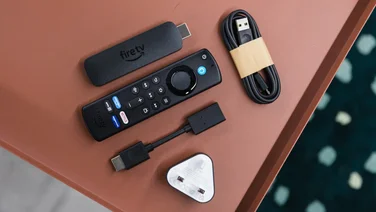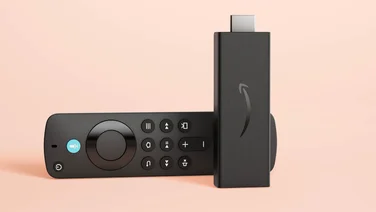To help us provide you with free impartial advice, we may earn a commission if you buy through links on our site. Learn more

It’s often said that the internet has democratised creativity, and there’s no better example of this than YouTube. If you’ve not looked at YouTube’s Creator Tools for a while or have never even dared venture into the world of creating your own videos, it’s well worth a look. Here I’ll show you how to use content supplied by YouTube to make your videos sound and look great without paying a penny. I’ll also explain how advertising on YouTube works, and discuss what your chances are of making the big time.
Everything you need to know about YouTube Red
How to use royalty-free music on YouTube
Contrary to previous form, YouTube now lets video creators use copyrighted music in their videos. Previously if you used copyrighted music (generally popular music from the big record labels), you would lose the ability to make money from your videos and could even get a strike on your account, which prevents you from making any money in the future.

YouTube has now made it very easy to see what copyrighted songs you can use in your videos, although you’ll still need to own the track itself in order to use it in your videos. To find out what music you can use in your videos without running into problems, click on My Channel on the left of the YouTube homepage and then Video Manager at the top. Finally, click Create on the left, and you’ll end up at the Audio Library page.
Three tabs separate the three types of audio YouTube makes available. The first tab is for royalty-free music. Unlike copyrighted music, where you have to pay the copyright holders on a per-usage basis (such as per-view on your video), royalty-free means you’ll be charged a flat fee for unlimited usage.
Note: this does not mean you can use free downloads from royalty-free music websites that state you must pay a fee in order to use a song in your videos. However, some musicians are happy to have their music used in online videos for free, and YouTube makes it very easy to find these audio tracks. On the Free music tab, you’re given a list of tracks you can use for free, and a button to download each one. It’s worth bearing in mind that while a lot of the tracks don’t require any credits to be given, it’s good practice (and also just nice) to give credit where credit’s due. Other tracks specify that you must add a credit to your video’s description (the text that appears under your video), so you should always make a note of the tracks you’ve used and the text you’re required to use.
An easy way to keep track of your music is to add tracks to your favourites, which can be done by clicking on the star button. You can then view the tracks you’ve used by clicking on the Favourites tab at the top of the list of tracks. Just because an artist has given permission to have their track used in YouTube videos does not mean that their licence applies elsewhere. If you want to use it for a television advert or another commercial project, you’ll need to check each artist’s individual policies. For example, the most prolific royalty-free music provider on YouTube, Kevin MacLeod, requires you to pay a licence if you want to use his music without attribution.
How to use copyrighted music on YouTube
If royalty-free music isn’t for you and you can only express yourself with copyrighted tunes, YouTube now makes it very easy to know what will happen to your video if you upload it with copyrighted music on board. Click on the ad-supported music tab in the Audio Library menu, and you’ll see a full list of all the music YouTube’s ContentID copyright system detects. You can search for the track you want to use in the search bar, or you can look for artists instead. When you’ve found the song you want to use, click on it and you’ll be told what you can expect to happen if you use the video.

Most copyrighted songs will result in pre-roll ads being shown on your video, and many of them will take all the revenue from the ads shown. In certain cases, copyright holders will split the revenue earned with the video creator, but this only applies to cover songs. If you’re planning on starting a musical YouTube channel and you want to do covers, it will be worth checking this list to see if your set list includes songs that are eligible. Other videos containing certain songs will be blocked in some countries, with Germany, in particular, losing out on a lot of videos that contain copyrighted content. Keep in mind that rightsholders can change their policies at any time and the fact you’re earning money on a video today does not mean you’ll be able to do so indefinitely.
Free sound effects
YouTube also has a reasonably large library of sound effects. Not all of them are particularly good, in fact very few seem to be of notable quality, but they’re useful if you don’t want to shell out on a collection. Like music, you can search, favourite and download sound effects. Unlike music, you don’t have to give credit for them, so you can use as many as you like in your videos.
Free stock video
YouTube also has a wide range of stock video you can use, although how exactly you can use it is very limited. You can find creative commons licenced video in the YouTube video editor (youtube.com/editor), although from our research, many of the videos probably shouldn’t be licenced as such, as some of the videos include footage from music concerts among other non-royalty-free content. The content can also only be used in the YouTube video editor and can’t be downloaded (in a legitimate fashion) from YouTube for use in your own video editing software.
Making money on YouTube
You’ll have read stories about the world’s biggest YouTube stars earning six-figure salaries from YouTube from views alone, raking in even more cash with product placement deals, events and even movie deals and music albums. These YouTubers didn’t do it on their own. Backed by large production studios with dedicated teams working on sponsorship deals for video adverts and product placement, behind every great YouTuber is a team of people making it happen.

This means that the standard video pre-roll adverts are not the main source of income for the biggest stars. It’s the bespoke content and self-sourced advertisers that bring home the bacon, not automatically assigned video ads. However, it’s still possible to make money from YouTube, although when you’ll actually start raking in the bucks will depend on how popular your videos become and a whole heap of luck. Often, it’s the unexpectedly viral cat video among thousands of similar clips that will rise above the rest and start gaining millions of views. Should this ever happen to you, there are a few ways to ensure you maximise your returns.
- When you’re filming your viral hit, make sure there’s no ‘incidental’ music playing in the background. YouTube’s ContentID system is very sensitive and if it spots music in your video, it will give all your ad money to the record label that owns the music.
- Your video content must be ‘advertiser friendly’. No, you don’t have to be a corporate shill, creating advertorial content that’ll make the suits happy, but your video does have to be something advertisers actually want to be seen promoting. It’s not hard to stay in advertisers’ good books; your video simply has to avoid violence drugs and sexually-suggestive content. Oh, and bad language. And ‘controversial’ subjects including war, politics and natural disasters. Most content is approved for monetisation by YouTube’s algorithms, but if viewers or advertisers report the video as inappropriate, this can also affect your video’s ability to make money. In other words, it’s a minefield.
- Ensure your video title and thumbnail are representative of the video: misleading viewers is frowned upon.
- Avoid product placement and adding in your own promotions; editing advertising content into the video itself could mean your video loses its monetisation status.
- Adhere to YouTube’s policy guidelines when making videos and commenting on other’s videos.





